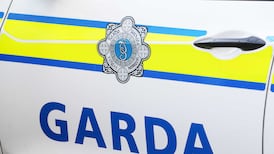Another Life: So where do twitchers go in the wintertime? Restless and gregarious as starlings, they can seem quite lost for destinations once the autumn gales have passed, writes Michael Viney.
There are no more dazed American warblers and waders to set their telescopes a-tremble on the coasts of Cork and Kerry. Hopes of further rarities - even a "first for Ireland" - quickly dissolve in the mid-winter drizzle.
Once, they could head for coastal rubbish tips, to hold their breath - not quite as the rest of us might, but in tense anticipation of spotting a different sort of seagull. The half-dozen kinds that breed in Ireland are matched in winter by as many visiting species from the Arctic and elsewhere, some so rare that only an expert eye can distinguish their pale-on-pale characteristics.
These birds are still wandering by, but the great reform in local rubbish tips may be redirecting, sometimes literally, their favourite ports of call. "Gone," I learn, "are Galway and Cork city dumps, Rogerstown and Dublin dumps, Newport, Ballina, Kilkee, Tralee and Blennersville . . ." Gone, that is, if not physically, then in their seagull banqueting attractions. At Rogerstown, the north Dublin estuary, "they fill over the rubbish too quickly . . . bloody do-gooder environmentalists." The quotes, complete with irony, are snatched from the Irish Birds Network, the twitchers' internet bulletin board and rallying-point (its content can range from quite arcane ornithology to amiably laddish cross-chat: to join, go to http://listserv.heanet.ie/ibn-l.html). There's an imminent visit to Ireland of 10 Belgian twitchers agog to spot rare American gulls: what should be their itinerary? IBN-L members were quick to offer suggestions.
A few years ago, Mayo's dump near Newport, then a bleak glen among the bogs, positively glittered with binoculars tracking two Arctic rarities among the hundreds of scavenging gulls. One was the all-white ivory gull from the high Arctic; the other Thayer's gull, a species of such subtle definition and rarity that its first European sighting, at the Galway dump in 1989, made international birding news. Today, Newport is a model of hygiene, with a full choice of recycling bins.
Galway dump is an ugly memory, and its place as a gull hot-spot has been taken by Culmore tip in Co Derry. Another, at Great Island in Cork Harbour, apparently runs it close. Fishing harbours are now the ever-reliable magnets. Killybegs, Galway and Dingle have been joined by Cobh, where, between harbour, seafront and (with a 40x telescope) the dump across the channel, the native gulls are joined by an impressive roster of lone Arctic or American vagrants.
The progressive growth of composting and the cleaning-up of our dumps should, on the face of it, be good news for herring gulls. Their population crashes have been notorious (at the Great Saltee Island off Wexford, for example, they have fallen from 3,000 breeding pairs three decades ago to less than 30 now) and widely attributed to botulism, a bacterial food-poisoning originating in kitchen waste fermenting in black plastic bags. But similar declines in Sweden and the Netherlands have been attributed to a virus, and research at NUI Cork has yet to settle on any single answer.
The precarious relationship between birds and human activity is given a different sort of twist in a polished and colourful book published by the Clare branch of BirdWatch Ireland. The Shannon Airport Lagoon: A Unique Irish Habitat explores a wildlife retreat that most of us have only glimpsed as a watery flash under the shuddering left-hand wing. The lagoon was created by the airport's development in seaplane days, (rather as the North Bull was a product of Dublin's harbourworks) and it has been wonderfully colonised by reed-beds, marsh and willow scrub, an attendant host of birds and insects and seven sorts of mammal.
Its residents are well adapted to the roar of planes, and it has come to be an important winter refuge for migrant black-tailed godwits and other waders and waterfowl that feed on the estuary mudflats. It has a public hide for bird-watching at the quieter, mid-winter weekends.
As with many airports, there's a constant threat of spread and encroachment, and the listing of the lagoon as a Special Area of Conservation comes after losses to carparks and so on. The new book, with its fine photographs by John Murphy, should help to rally public interest and build on support from Clare County Council. It is available, for 10, plus €2 p&p, from John Murphy at Applewood, Ballycar, Newmarket-on-Fergus, Co Clare, (E-mail: jemurphy@esatclear.ie), or the Clare BirdWatch secretary, Tom Lynch, 16 Oak Park, Ennis, Co Clare.







